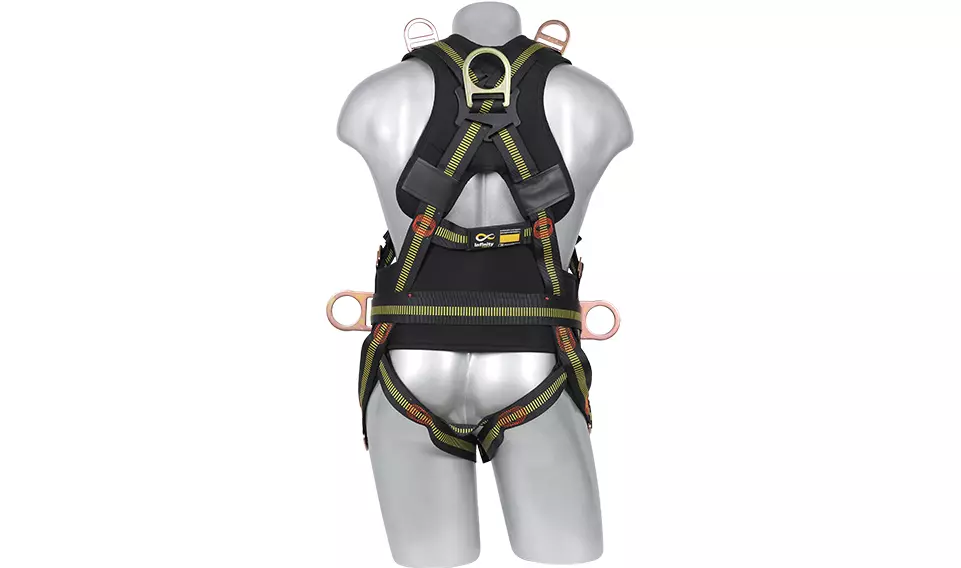
What is the difference between a full-body safety harness and a half-body safety harness?
There are significant differences between full-body safety harness and half-body safety harness in terms of structure, protection range and usage scenarios.
1. Structural differencesFull-body safety harness: Full-body safety harness consist of five main parts, including shoulder harness, waist harness (or hip harness), leg harness, anti-slip buckles and buckles. These parts work together to provide all-round protection for the user. The shoulder harness passes diagonally across the chest from the shoulder and is fixed to the opposite waist harness; the waist harness (or hip harness) passes through the waist (or hip) of the passenger and is fixed to the seat; the leg harness passes through the passenger's thigh and is fixed to the waist harness; the anti-slip buckle is used to adjust the tightness of the seat harness to ensure that the seat harness is close to the passenger's body; the buckle is used to fix the waist harness (or hip belt) together to prevent it from loosening.
Half-body safety harness: Half-body safety harness, also known as the waist part of the three-point safety harness, is mainly composed of a harness that passes through the waist of the passenger and is fixed to the seat. It is usually used in conjunction with a shoulder harness, but in some cases, such as in vehicles that are only used for short distances or at low speeds, only a waist harness may be used.
2. Protection rangeFull body harness: A full body harness covers the main parts of the human body, including the shoulders, chest, waist, hips and thighs. In the event of a collision or fall, it is able to dissipate the impact force from multiple directions at the same time, transferring the external force away from the user, thereby reducing injuries. This comprehensive protection makes full body harness very popular in scenarios that require high safety performance, such as child safety seats, aerial work harness, etc.
Half-body harness: A half-body harness mainly protects the waist area of the passenger. In the event of a collision, it is able to disperse part of the impact force through the waist, reducing damage to the abdomen and lower body. However, due to its relatively limited protection range, it is usually necessary to use it in conjunction with a shoulder harness or other safety equipment to provide more comprehensive protection.
3. Usage scenarioFull body harness: A full body harness is usually used in scenarios that require high safety performance, such as child safety seats, racing cars, aerial work harness, etc. In these scenarios, full-body seat harness can provide more comprehensive and reliable protection to ensure the safety of users.
Half-body seat harness: Half-body seat harness are used in a relatively wide range of scenarios, but they usually appear as part of a three-point seat harness system. In ordinary passenger cars, lap seat harness are used in conjunction with shoulder seat harness to provide basic protection for passengers. However, in scenarios that require higher safety performance, five-point seat harness may be a better choice.
In summary, there are obvious differences between full-body seat harness and half-body seat harness in terms of structure, protection range, and usage scenarios. When choosing which seat harness to use, comprehensive consideration should be given to specific needs and scenarios.












